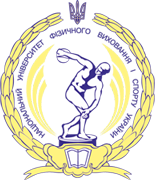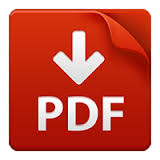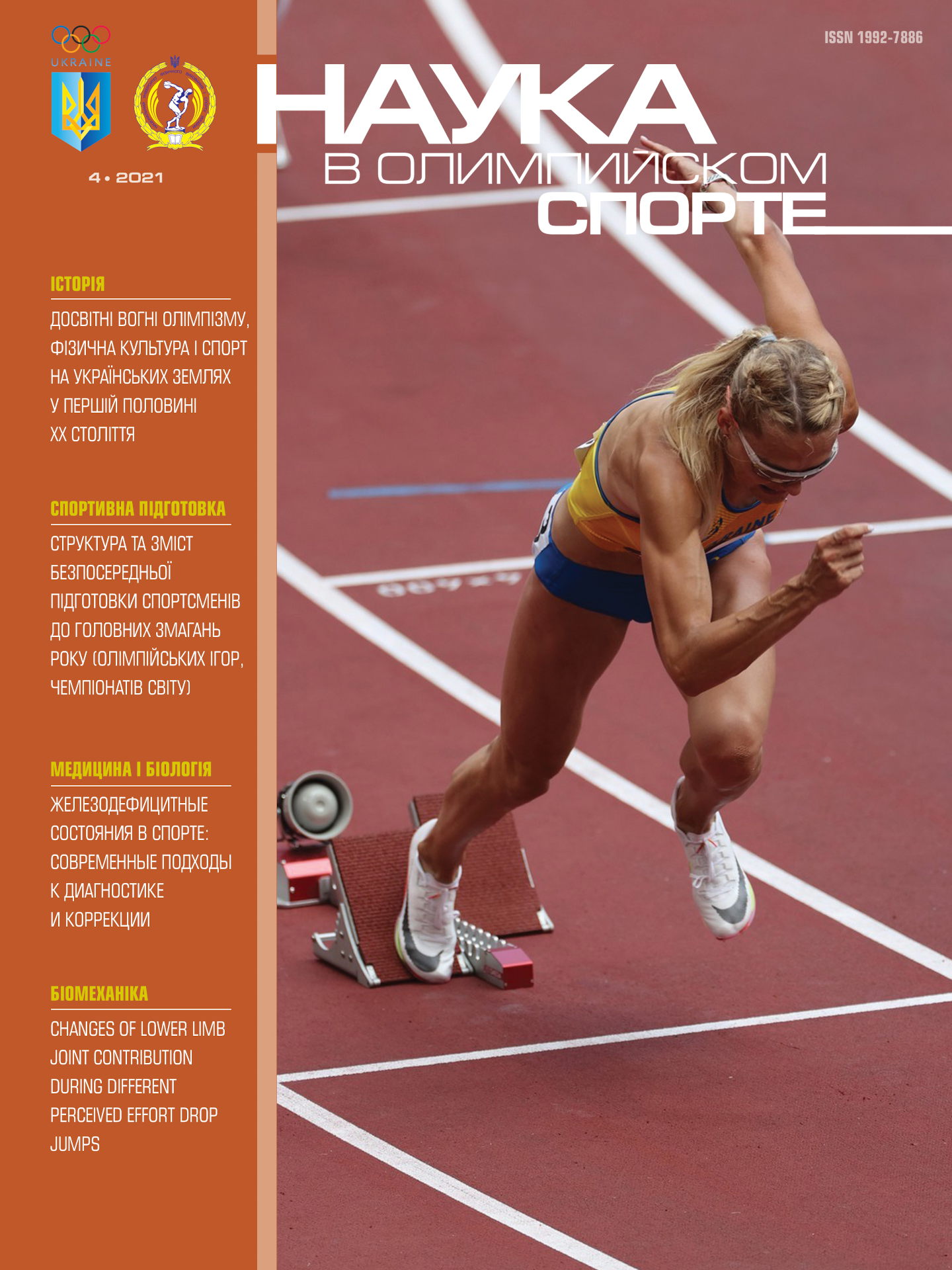doi: 10.32652/olympic2021.1_9
This article is devoted to the problem of academic integrity in sports science. Based on the generalization of special literature, legislative acts, normative documents, the activities of international organizations to comply with the basic principles of scientific ethics and combat their violations, the problem of academic integrity and its reflection in modern sports science in Ukraine is analyzed. The basic values of academic conscientiousness are highlighted, the information environment of sports science is characterized, the manifestations of dishonesty in scientific research and the publication sphere are analyzed, the crisis phenomena in the scientific and educational spheres and their impact on academic conscientiousness are analyzed, the reasons for the emergence and features of the development of the pseudonym are analyzed. Scientific environment, ways to ensure academic integrity and sanctions policy against violators of its principles and requirements, such concepts and phenomena as "self-plagiarism" and "anti-plagiarism" are affected. The requirements for scientific research and publications, ensuring their compliance with the fundamental values on which scientific and educational activities are based, are characterized.
References
1. Adamchuk VV. Programming of the training process of athletes in track and field athletics battling at the stage of non-intermediate preparation to zmagan [Avtoref. dis. cand. sciences fiz. vortex that sport]. Kyiv: National University of Physical Fitness and Sports of Ukraine, 2021. 22 p.2. Astanekh B. Ethical issues in the field of scientific publications. scientific periodicals: problems and solutions, 2013:38-42 [Electronic resource]. Access mode: scienceproblems.ru/images/stories/text/eticheskie-voprosy.pdf
3. Batkin LM. Plagiarism in science. Social Review, 2014;13(3):218.
4. Bibliometrics of Ukrainian science [Electronic resource]. Access mode: http://nbuviap.gov.ua/bpnu/
5. Bobkova OV, Davydov SA, Kovaleva IA. Plagiarism as a civil offense. Patents and licenses. Intellectual Property Rights, 2016;7:31-38.
6. Bondarchuk AP. Periodization of sports training. K: Olympus. lit., 2005. 304 p.
7. Braginskaya NV. Mafia and school. Sociological Review, 2014;13(3):208-218.
8. Brower L. Pharmaceutical and food mafia. Kiev, Aratta, 2004. 280 p.
9. Byvaltsev VA, Stepanov IA, Belykh EG, Kalinin AA, Bardonova LA. Plagiarism and academic conscientiousness in science. Bulletin of the Russian Academy of Medical Sciences, 2017;72(4):299-304.
10. Vinogradova TV. Conscientiousness in scientific research: an analytical review. RAN. Center for Scientific Information Research on Science, Education and Technology. M., 2017. 74 p.
11. Vitko V. On the signs of the concept of plagiarism in copyright. Intellectual property. Copyright and related rights, 2017;2:7-66.
12. Demidov DD. The problem of plagiarism in scientific research. University book. Information and analytical journal. 2017; Oct:66-71.
13. Dovgodko IV. Stimulation of the special robotic capacity of the worker with high qualifications during the period of non-intermediate training to zmagan [Author's abstract. dis. cand. sciences fiz. vortex that sport]. Kyiv: National University of Physical Education and Sports of Ukraine, 2021. 21 p.
14. Zhelyazkov Ts, Dasheva D. Base on sports training. 2nd ed. Sofia: Gera art, 2011. 432 p.
15. Zagorodniy A. If the brain drain is not stopped, science in Ukraine will die before the middle of the 21st century. Ukrainian truth. December 16, 2020
16. Law of Ukraine “On Lighting” [Electronic resource]. Access mode: https://zakon.rada.gov.ua/laws/show/2145-19#Text
17. Zeldina M. Scientific journals: change of development vector. University book. Information and analytical journal. 2020; Dec: 58-62.
18. Zenkin SN. Specifics of academic plagiarism. Sociological Review, 2014;3(3):193-196.
19. Issurin VB. Training of athletes of the XXI century: scientific foundations and construction of training. Moscow: Sport, 2016. 464 p.
20. Kalyuzhny spacecraft. Information environment and information environment of science: essence and purpose. Management of science and scientometrics. Scientific journal, 2015;18:7-23.
21. Korbut A. Reflections on plagiarism. Sociological Review, 2014;3(3):198.
22. Kulikova EY. Stolen science: why plagiarism and self-plagiarism are unacceptable. Vestnik Ros. state honey. University, 2016;6:50-53.
23. Migacheva AYu, Amirshatyan KYu. Civil liability for plagiarism: problem statement. Society: politics, economics, law, 2016;7:41-43.
24. Ostrovskaya AS. Plagiarism in the XXI century: who needs it? Issues of modern pediatrics, 2016;15(2):148-153.
25. Platonov VN. General theory of training athletes in Olympic sports. K.: Olympic Literature, 1997. 584 p.
26. Platonov VN. Fundamentals of training athletes in Olympic sports. Handbook of a trainer [in 2 volumes]. M.: PRINTLETO LLC, 2021 [T. one]. 592 p.
27. Platonov VN. Periodization of sports training. General theory and its practical application. K: Olympus. lit., 2013. 624 p.
28. Platonov VN. The system of training athletes in Olympic sports. General theory and its practical applications: textbook [for trainers]: in 2 books. Olympus. lit., 2015 [Kn. one]. 680 p.
29. Platonov VN. Sports of the highest achievements and preparation of national teams for the Olympic Games. Domestic and foreign experience: history and modernity. M.: Sov. sport, 2010. 312 p.
30. Pruzhinin BI. Applied and fundamental in the ethos of modern science. Philosophy of science. M., 2005; 11: The ethos of science at the turn of the century: 109-120. 31. Fundamental values of academic integrity (translation from English) Ed. T. Fishman. International Center for Academic Integrity. Institute of Ethics. Clemson University (Pivdenna Karolina), 2019. 39 p.
32. Center for the Social Communications of NBUV [online]. Available at: http://nbuviap.gov.ua/
33. Chekhovich Yu. Only reckless people can pass off the copied text as their own. University book. Information and analytical journal. 2021; July-August: 8-13.
34. Shinkaruk O. Features of the Olympic training of athletes in foreign countries. Physical education, sport and health culture in modern society, 2012;1(17):126-130.
35. Shinkaruk OA, ta in. Those nology of selection and orientation of sportsmen-pochatkivtsiv in various kinds of sports [industrial news]. NUFVSU, 2015.
36. Shinkaruk OA. The selection of athletes and the orientation of their training in the process of many years of improvement (on the basis of Olympic sports). K.: Olympian Literature, 2011. 360 p.
37. Shinkaruk OA. Theory and methods of training athletes: management, control, selection, modeling and forecasting in Olympic sports [navch. posib.]. K., 2013. 136 p.
38. Bompa TO. Total training for coaching team sports. Toronto: Sport books publisher, 2006. 22 p.
39. Bouter LM, Tijdink J, Axelsen N, Martinson B, ter Riet G. Ranking major and minor re-search misbehaviors: results from a survey among participants of four World conferences on research integrity. Research integrity and peer review. 2016:1-17. DOI: 10.1186/s41073-016-0024-5.
40. Committee on Publication Ethics: official site [online]. Available at: http://publicationethics.org/about
41. Costa PB, Fukuda DH. Youth Programs. In: Brown LE, ed. Strength training [2nd ed.]. Champaign, IL: Human Kinetics, 2017. 341-355.
42. Coyle EF. Improved muscular efficiency displayed as Tour de France champion matures. Journal of Applied Physiology. 2005;98:2191-2196.
43. D’Antona G, Lanfranconi F, Pellegrino MA, et al. Skeletal muscle hypertrophy and struc-ture and function of skeletal muscle fibers in male body builders. Journal of Physiology. 2006;570:611-627.
44. Dempsey JA, Miller JD, Romer LM. The respiratory system. In: Tipton CM, ed., ACSN’s advanced exercise physiology, 1st ed. Philadelphia: Lippincott Williams & Wilkins, 2006. 246-299.
45. Deschenes M, Olivier C, Dupras-Leduc R. The Fonds de rescherche du Quebec’s institu-tional rules on responsible conduct of research: Proceedings of the 4th World conference on research integrity. Research integrity and peer review. 2016:5. DOI: 10.1186/s41073-016-0012-9.
46. Faigenbaum AD, Kraemer WJ, Limkie CJ. Youth resistance training: Updates position statement paper from the national strength and conditioning association. Journal of Strength and Conditioning Research, 2009;23:60-79.
47. Gibala MJ, Rakobowchuk M. Physiological adaptations to training. In: R.J. Maughan, ed., Olympic textbook of science in sport, 1st ed. International Olympic Committee, 2009. 56-69.
48. Goss K. The truth about periodization: why much of what you think you know about this important training concept is just wrong [online]. BFS Magazine. 2008; Nov/Dec: 48-51. Available at: http://www.biggerfasterstronger.com/home/MagCategories_NovDec.asp?id=39&previd=0
49. Haff G, Burgess S. Resistance Training for Endurance Sports. In: B. Reuter, ed., Develop-ing endurance. 1st ed. National Strength and Conditioning Association (NSCA). Cham-paign, IL: Human Kinetics, 2012. 135-180.
50. Haff GG, Haff EE. Training integration and periodization. In: J.R. Hoffman, ed., NSCA's program design. National Strength and Conditioning Association, 1st ed. Cham-paign, IL: Human Kinetics, 2012. 325 p.
51. Haff GG. Periodization and Power Integration. In: McGuigan, M., ed. Developing power. Champaign, IL: Human Kinetics, 2017. 33-61.
52. Harre D. Principles of sports training. Berlin: Sportverlag,1982. 231 p.
53. International Committee of Medical Journal Editors: official site [online]. Available at: www.icmje.org
54. Johnson JA, Haskvitz EM, Brehm B. Applied sports medicine for coaches. Baltimore: Wolters Kluwer / Lippincott Williams and Wilkins, 2009. p.370.
55. Journal of Physical Education and Sport [online]. Available at: https://www.efsupit.ro/
56. Kenney LW, Wilmore JH, Costill DL. Physiology of sport and exercise. Champaign, IL: Human Kinetics, 2012. 621 p.
57. Kraemer WJ. How Muscle Grows. In: Brown, L.E., ed. Strength training [2nd ed.]. Champaign, IL: Human Kinetics, 2017. pp.29-48.
58. McGuigan M, ed. Developing power. Champaign, IL: Human Kinetics, 2017. 255 p.
59. Millet G, Roes B, Schmitt L. Combining hypoxic methods for peak performance. Sports Medicine, 2010;1:2-25.
60. Muller R. Postdoctoral life scientists and supervision work in contemporary university: A case study of changes in cultural norms of science. Minerva. 2014;52(3):329-349.
61. Park R. Fraud in science 11 Social research: An international quarterly. Baltimore, 2008;75(4):1135-1150.
62. Rusko HK, Leppavuori A, Makela P, Leppaluoto J. Living high, training low: A new ap-proach to altitude training at sea level in athletes. Medicine and Science in Sports and Ex-ercise, 1995;27(5):6.
63. Rusko HK, Tikkanen H, Paavolainen L. Effect of living in hypoxia and training in normoxia on sea level VO2max and red cell mass. Medicine & Science in Sports & Exercise, 1999;31:86.
64. Segerstrale U. The mark border land between scientific intuition and fraud. J. appl. Phi-losophy. N.Y., 1990;5(1):11-20.
65. Singapore Statement on Research Integrity [online], 2010. Available at: https://wcrif.org/documents/327-singapore-statement-a4size/file
66. Sismondo S. Medical publishing and the drug industry: Is medical sciences for sale. Learned publishing. 2012;25(1):7-15.
67. Smaldino P, McElreach R. The natural selection of bad science. Royal society open sci. 2016; Sept 21. DOI: 10.1098/rsos.160384.
68. Stone MH, Stone ME, Sands WA. Principles and practice of resistance training. Cham-paign, IL: Human Kinetics; 2007: 376.
69. Vallas SP, Kleinman DL. Contradiction, convergence and the knowledge economy: The co-evolution of academic and commercial biotechnology. Socio-economic review. 2008;6(2):283-311.
70. Varley MC, Lovell R, Carley D. Data Hygiene. In: French DN, Torres Ronda L, ed. NSCA’s essentials of sport science. Champaign, IL: Human Kinetics, 2022. pp. 101-112.
71. Wilber RL. Altitude Training and Athletic Performance. Champaing: Human Kinetics, 2004. 240 p.
Received 18.09.2021













